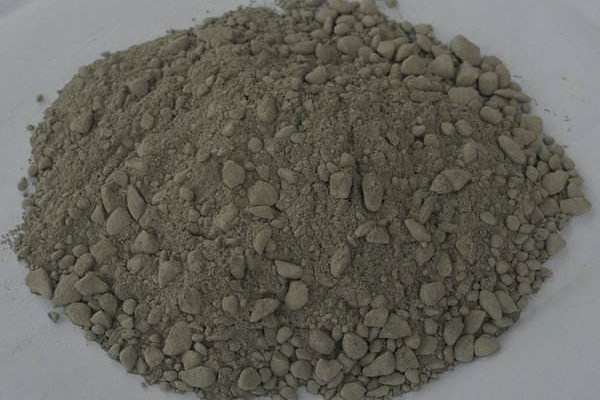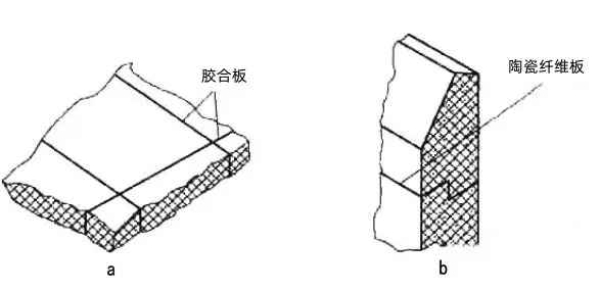노 내화물 캐스터블 구조의 신축 조인트 설정 사양
모든 사람은 확장 조인트가 건설 중에 예약되어 있음을 알고 있습니다. 내화물 벽돌 벽돌공 직. 용광로 내화성 캐스트 가능에도 확장 조인트가 있습니다.? 적절한 확장 조인트를 어떻게 예약합니까? 다루기 힘든 캐스터블? 어떤 종류의 주조물을 위해 어떤 크기의 확장 조인트를 예약 해야하는지? 당신은 이것을 알고 있습니까?? 확장 조인트가 예약되지 않은 경우, 나중에 사용하는 방법?
내화성 벽돌 또는 캐스트 가능성이 산업 가마의 안감에 사용될 때, 온도 변화 및 온도 그라디언트로 인한 열 응력의 영향으로 인해 안감 구조가 변형되고 확장됩니다.. 그러므로, 내화성 벽돌과 주조물을 구성하는 동안 확장 조인트가 남아 있어야합니다..

내화성 벽돌과 주조물은 다른 원료로 만들어집니다., 가열 후의 확장 계수도 다릅니다. 벽돌 동안의 확장 크기는 주로 사용 된 내화 벽돌 또는 주조물의 특성과 그에 따른 온도에 의해 결정됩니다..
용광로 내화성의 팽창 조인트 형태
내화성 캐스트블에는 두 가지 유형의 확장 조인트가 있습니다.: 관절과 비 스루 조인트를 통해. 그림에서 볼 수 있듯이, 에이, B- 스루 팽창 조인트; c-non-shrough 확장 조인트.

확장 조인트
내화성 캐스트 가능성의 팽창 조인트 배열은 주로 간격을 선택하는 것과 관련이 있습니다., 너비, 확장 조인트의 형태. 조립식 부품에서 조립 된 용광로 몸체의 확장 조인트 사이의 거리와 현장에 주조 된 용광로 바디 사이의 거리는 다릅니다..
purnace 바디의 경우 조립식 구성 요소로 조립됩니다, 용광로 몸체가 짧은 경우, 조립식 부품 사이에 추가 확장 조인트를 남길 필요가 없습니다., 그리고 용광로 몸체의 양쪽 끝에 적절한 간격 만 남겨야합니다.; 용광로 몸체가 길면, 확장 조인트는 매번 남을 수 있습니다 5 에게 10 용광로 몸체의 각 부분의 온도에 따라 용광로 몸의 길이를 따라 미터, 그리고 관절은 채워져 있습니다 세라믹 섬유 로프 용광로의 저온 및 중간 온도에서 연기와 화재가 바깥쪽으로 방출되는 것을 방지하기 위해 점토 슬러리에 담근.
purnace 바디는 현장에서 캐스팅됩니다. 내화성 캐스트 타이블의 용광로 몸체에 대한 확장 조인트의 간격 및 폭. 테이블의 값은 점토 및 고 알루미나 내화성 캐스트 가능에 적용 할 수 있습니다..
필러의 문제. 내화성 캐스트 어필의 팽창 조인트의 재료는 쏟아 지거나 조심스럽게 채워지기 전에 제자리에 고정되어야합니다.. 블록에 쏟아 질 때, 내화성 캐스트 가능은 확장 조인트에 따라 여러 블록으로 나뉩니다.. 곰팡이는 확장 조인트에서 분리하고 붓는 데 사용해야합니다., 그리고 초기 설정 후에 조인트 필러는 내장되어야합니다.:δ = 3 ~ 4mm b:D = 5mm

④ 변위 방지. 확장 조인트 필러가 변위 또는 내화성 주조물의 국소 접착을 방지하기 위해, 필러 층은 정확하게 절단하고 단단히 놓아야합니다.. 필요한 경우, 필러 층을 안정화시키기 위해 손톱을 캐스팅 가능한 상태로 못 박을 수 있습니다..
⑤ 분리 조치. 필러 층이 차가운 상태에서 분리되고 건축 환경에서 핫 상태와 접촉 할 때, 그건, 슬라이딩 표면이됩니다, 필러가 변위를 막지 못하도록 분리 층을 추가하는 것이 좋습니다., 유착으로 인한 누출을 방지하거나 팽창 간격을 차단하십시오.
확장 조인트의 허용 오차
(1) 수직 팽창 조인트의 수직 오차는 높이가 미터당 2mm를 넘지 않고 총 높이가 15mm 이하가 될 수 있습니다..
(2) 수평 팽창 조인트의 수평 오차는 미터당 2.5mm를 넘지 않고 총 길이가 15mm 이하가 될 수 있습니다..
(3) 발전소 보일러의 확장 조인트 오류는 3 ~ 4mm로 허용됩니다..
(4) 확장 조인트의 너비 오차는 다음과 같습니다
(5) 현장에 주조 된 모든 유형의 내화 된 캐스트 가능성은 디자인 도면에 지정된 확장 조인트가 제공되어야합니다.. 너비 오류는 +3mm이며 지정된 너비보다 적습니다..
용광로 내화성 가능한 확장 조인트 구성을위한 예방 조치
용광로 바닥을 구성 할 때, 내화성 벽돌 또는 주조물의 확장 관절은 상단 및 하단 벽돌 층과 동일한 층의 용광로에서 비틀어 야합니다.. 용광로 벽을 만들 때, 내부와 외부 층 사이에 남겨진 팽창 조인트와 상단 및 하단 층도 비틀 거릴 수 있습니다.. 원형 벽을 구성 할 때, 확장을 보상하기 위해 외부 껍질 사이에 간격이 남아 있어야합니다..
아치의 구성에서, 내화성 벽돌과 주조물의 확장 관절은 양쪽 끝에 똑바로 남겨 져야합니다.. 떠날 때, 아치의 세로 확장과 퍼니스 벽의 상향 확장을 고려하십시오.. 아치의 길이가 더 큰 경우 5 미터, 팽창 조인트를 양쪽 끝에 남겨 두는 것 외에도, 팽창 조인트는 아치 길이의 세분화에 따라 아치 중앙에 남겨 져야합니다., 그리고 비틀 거리는 아치의 확장 관절은 똑바로 남겨 두어야합니다..
다층 아치의 각 층의 확장 조인트는 비틀어 야합니다., 그리고 팽창 조인트는 평평한 벽돌 층으로 덮여 있어야합니다.. 마른 실리카 벽돌 아치라면, 1-2MM 골판지는 모든 아치의 방사형 조인트에 삽입해야합니다. 3-5 확장을 보상하는 벽돌.
 Rongsheng 내화물 공장
Rongsheng 내화물 공장
위챗
위챗으로 QR코드 스캔